Architects & Firms
Standing at the gateway to the Ohio State University’s (OSU) nascent Carmenton campus, the 64,000-square-foot Energy Advancement and Innovation Center (EAIC) is about one-fifth the size of a neighboring research building, but “it can hold its own on the site,” says Brendan Flaherty, a senior project manager with the institution’s facilities, design, and construction group. For starters, the luminous structure of glass, polycarbonate, and precast concrete significantly departs from the campus vernacular of brick rectangular buildings, he points out.
Even more distinguishing is the EAIC’s 281-kilowatt array of 704 photovoltaic (PV) panels, held 9½ feet above its roofline in a ragged-edged canopy that overhangs its footprint. Combined with a nearly two-story-tall “Block O”—OSU’s logo—rendered in flexible white LED strip lights, the center embodies its mission as a living laboratory and incubator for academia and practitioners to research renewable energy and direct current (DC) power.
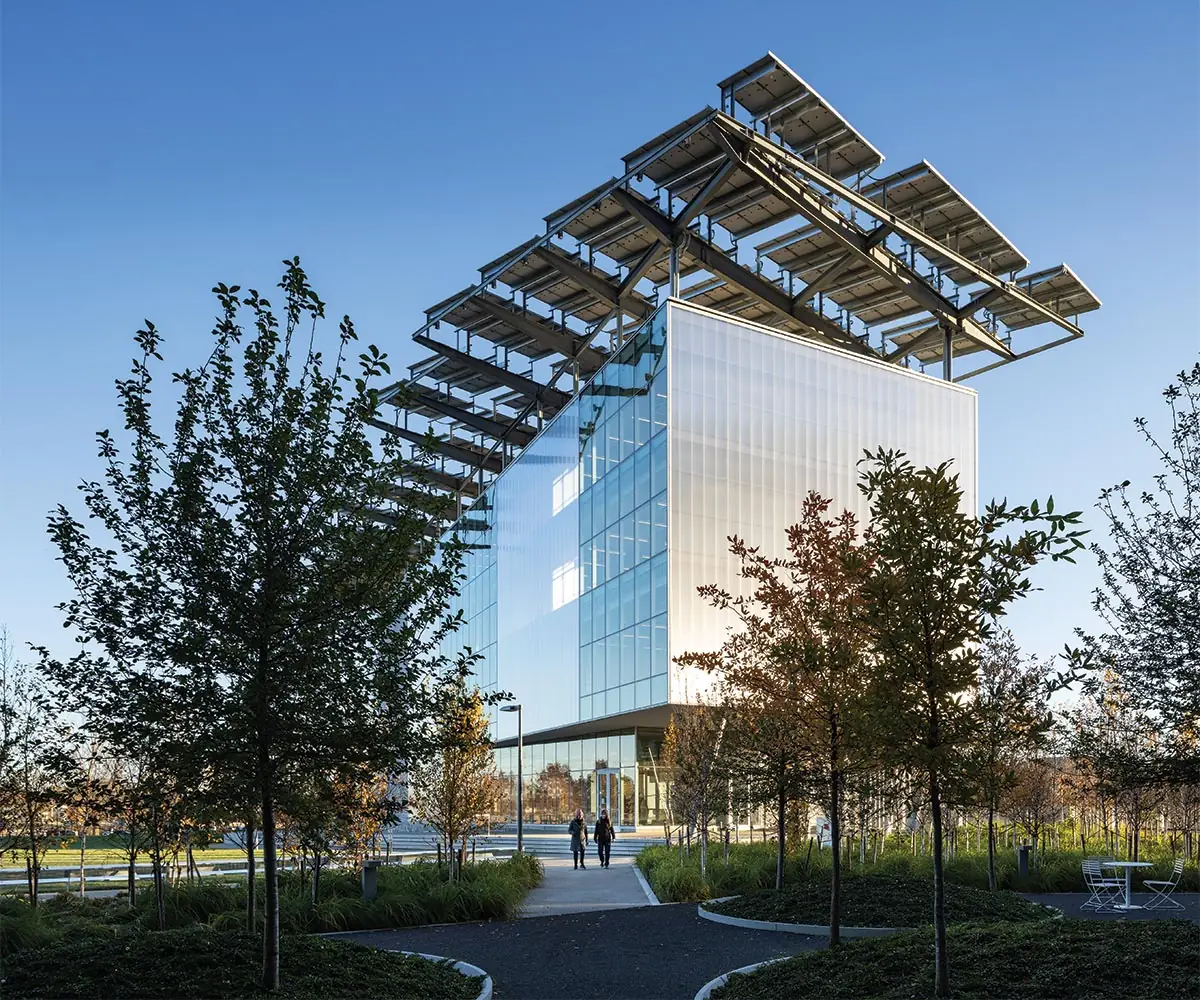
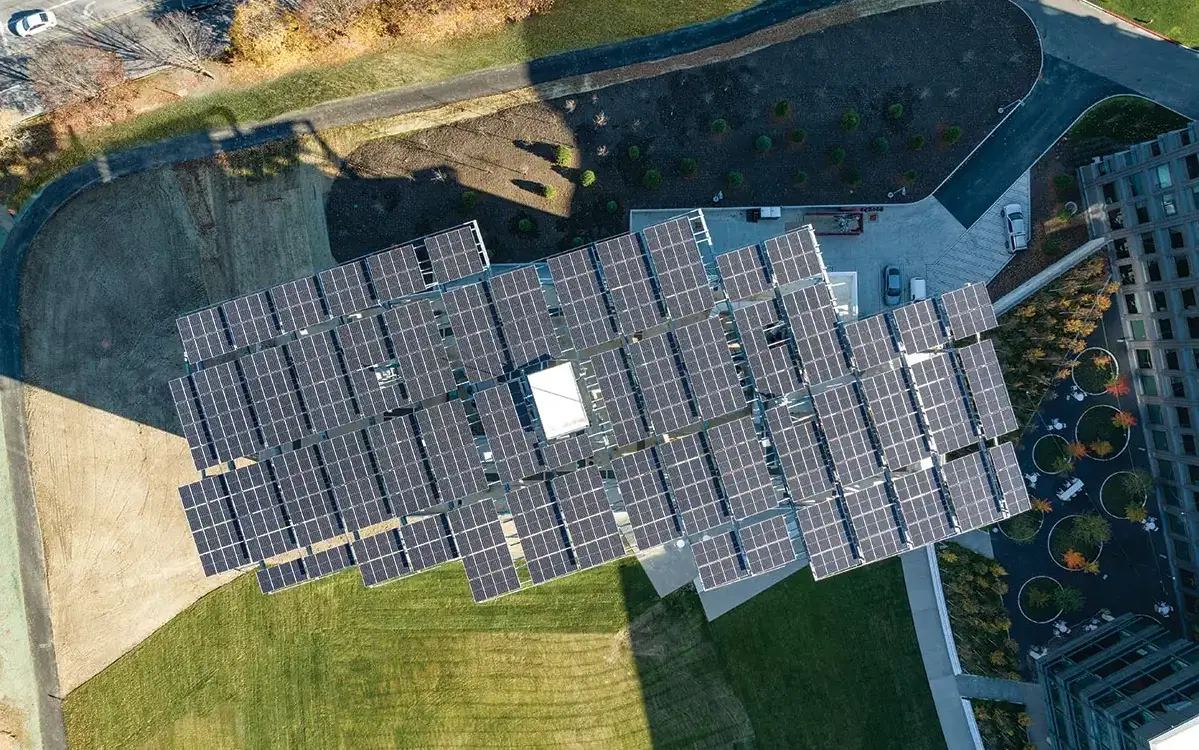
The solar canopy comprises 704 PV panels. Photos © Michael Moran, click to enlarge.
“Many in the industry believe a DC-powered future is possible, given the efficiencies available by distributing DC power throughout buildings,” says Lindsay Smith, principal at New York–based Smith-Miller+Hawkinson Architects (SM+H), the project’s design architect, which collaborated with architect of record Moody Nolan, headquartered locally in Columbus. “This was an opportunity to make a university building of scale that was using the direct current straight from the solar panel.”
In 2017, the multinational energy company Engie and Axium Infrastructure US won a 50-year contract to operate and optimize OSU’s utility system. As part of its proposal, Flaherty says, Engie pledged $38.5 million of the EAIC’s ultimate $49 million price tag, along with additional funds for research and building operations. SM+H worked with OSU faculty, researchers, and leadership to create a programming vision for the EAIC, which broke ground in 2021 and opened its doors in November 2023.
The center’s holistic design is the result of careful intention, says SM+H cofounder Laurie Hawkinson: “Things that look normal or simple here are not.”
The EAIC’s offset from the adjacent Pelotonia Research Center ensures clearance for fire separation and shade-free solar exposure year-round—a goal helped by the addition of a fourth floor during construction documentation. A loading area angles the east elevation inward; ensuring that views to the main OSU campus, from a plaza to the west, nudged the footprint north.
SM+H 3D-printed numerous study models to devise the striking solar canopy, which arranges 44 16-panel modules into a plaidlike pattern that filters in daylight and creates dynamic shadows below. The firm worked with structural engineer Thornton Tomasetti to design a steel armature for the racking system. “We wanted the canopy to feel light,” Hawkinson says. “We didn’t want to use any excess weight or energy.”
The EAIC’s envelope comprises a glass curtain wall interspersed with translucent polycarbonate panels—up to 42 feet tall by 19 feet wide—and precast concrete panels, which soften the hard grid lines with a rippling effect. Though both the insulated glazing and polycarbonate systems have a U-factor of 0.24 (equivalent to R-4.2), the size and continuity of the polycarbonate panels result in fewer opportunities for thermal bridging. The precast, backed with spray-foam insulation, delivers an R-value of 16.25. The mix of materials results in an interior that offers different qualities of light and clear views out in every direction.
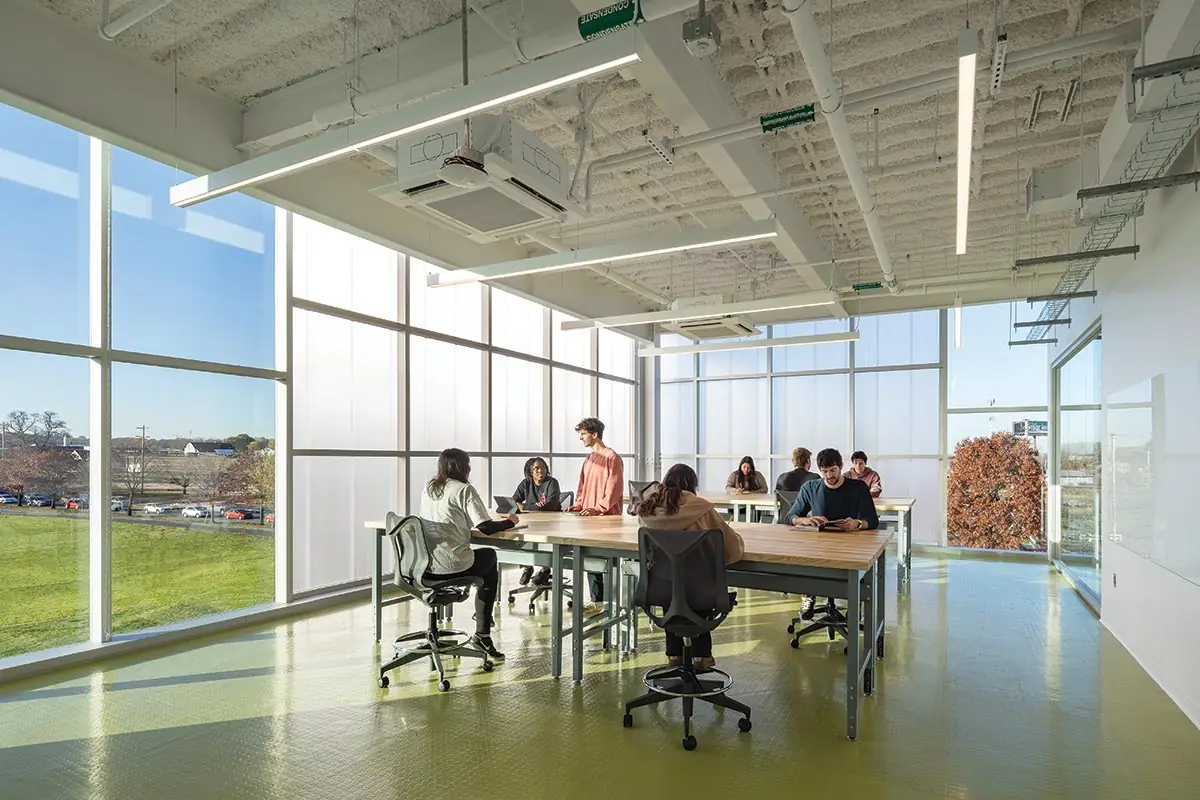
1
The enclosure’s materials mix (top of page) creates different qualities of light within the building (1 & 2). Photos © Michael Moran
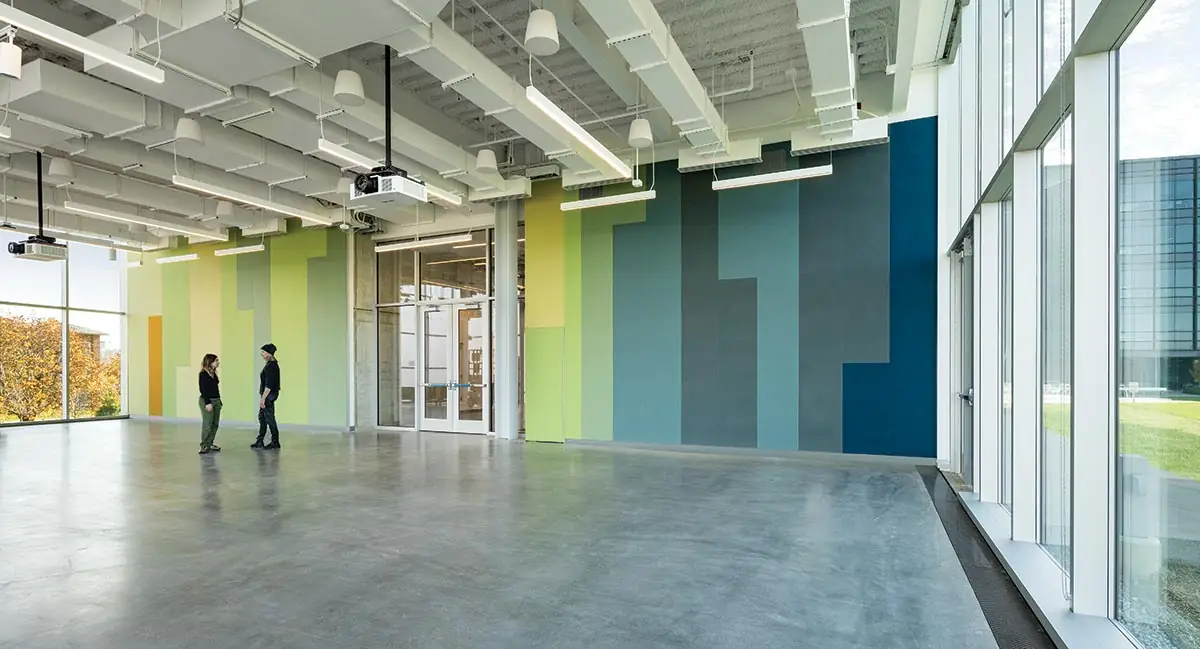
2
Accessible from the east, the loading zone, makerspace, vehicle testing bays, and a room for future battery storage fill the ground floor of the EAIC, which is built into a slope. Event space and a café occupy much of the first floor, which is open to the public and can be accessed from the west plaza.
The second through fourth floors contain a mix of offices, meeting rooms, flexible workspaces and collaboration areas, and testing pods with electrical panels fed directly with power generated from the PV array for the development of “technologies that would bring the DC microgrid world to the next level,” Smith says.
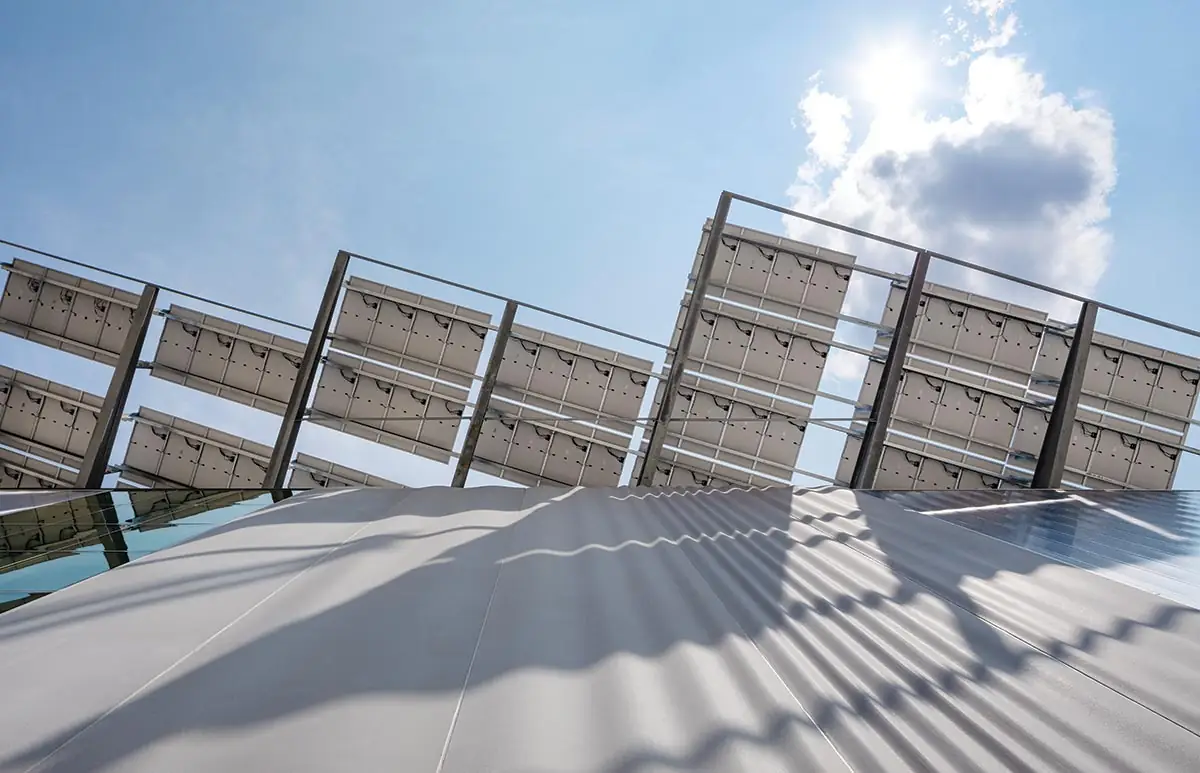
The DC power generated by the overhanging PV array (above) is distributed throughout the EAIC, avoiding an estimated 3 to 5 percent in conversion losses. Photo © Michael Moran
Today, many devices—computers, electric vehicles, and LEDs—run on DC. By distributing DC power at high voltage, the EAIC prevents an estimated 3 to 5 percent in conversion losses, says Kevin McCaughey, a principal at Advanced Engineering Consultants, which oversaw the project’s m/e/p design. Other innovations piloted in the center include driverless LED luminaires, which can run more efficiently and have a longer operating life than standard LED fixtures that must convert incoming AC power to DC; a conduit system able to support future mechanical equipment via Power over Ethernet; and a variable refrigerant-flow system that leverages the campus’s chilled-water loop.
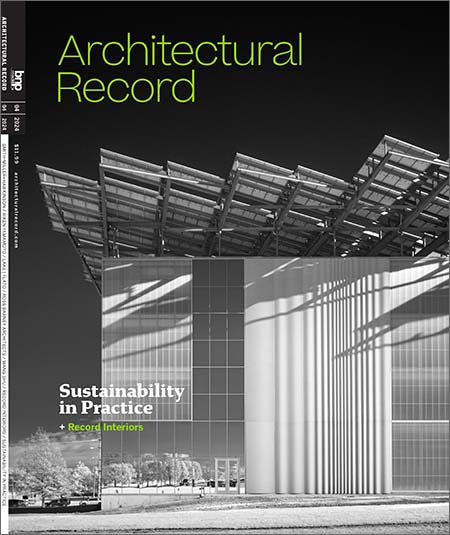
Though the EAIC is expected to be 60 percent more efficient than a comparable baseline building, it still relies on the campus’s AC power grid to supply up to two-thirds of its energy, says McCaughey, due to the high needs of a research facility. He worked with the Houston-based controls manufacturer to design a custom bidirectional inverter that optimizes the conversion of electricity and sends excess energy from the PV array to the grid.
OSU’s Flaherty says that the team had initially considered making the EAIC net zero, but quickly realized that a PV array to meet the project’s full demand would be “way, way too big.” By pivoting to a research facility that allows for the firsthand study of renewable-energy systems and DC microgrids, he says, “we can make advancements that will help thousands of buildings.”
Click plan to enlarge
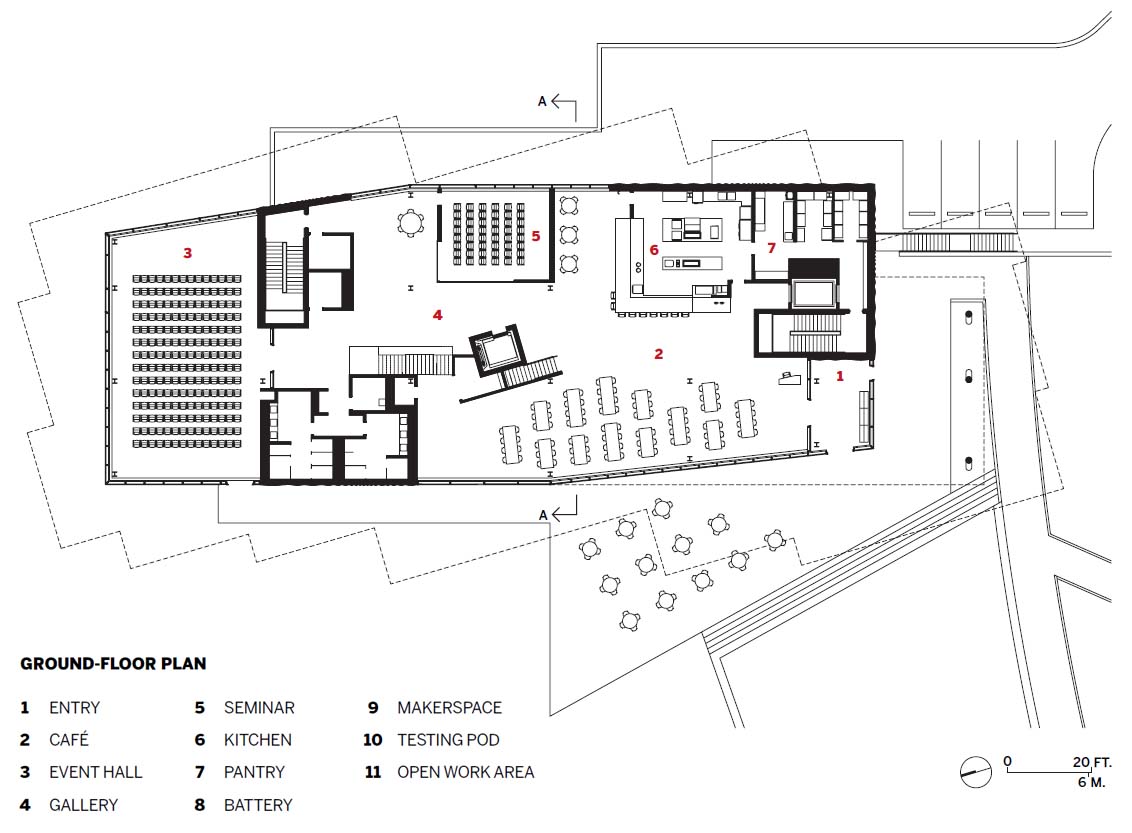
Click section to enlarge
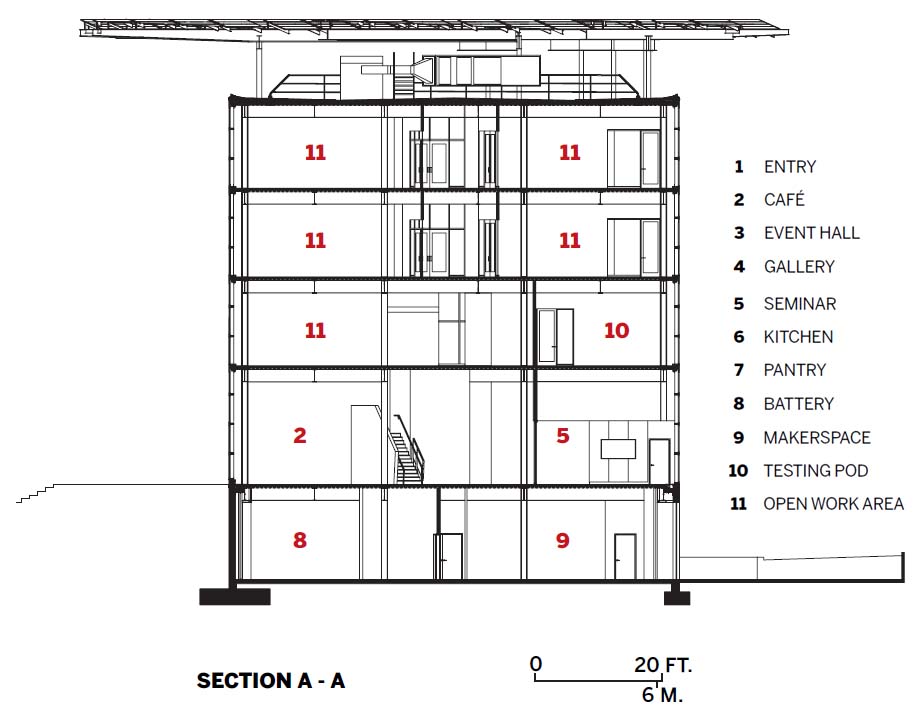
Join RECORD on April 17 at the Massachusetts Institute of Technology’s MIT Media Lab for Sustainability in Practice, a special half-day event with featured speakers including Carol Ross Barney, Mario Cucinella, Felix Heisel, and David Lake and Ted Flato.
Credits
Architect:
Smith-Miller+Hawkinson Architects — Laurie Hawkinson, partner/lead designer; Henry Smith-Miller partner; Lindsay Smith, principal; Andrea Tonc, project manager; Alex Mann, Jacqueline Stern, project designers; Emily Po, Galen Pardee, Sarah Bujnowski, Rahul Gupta, Beste Aykut, Yini Xu, Evan Chiang, design team
Architect of Record:
Moody Nolan
Consultants:
Thornton Tomasetti (structure/facade), Advanced Engineering Consultants (m/e/p/fp/AV/IT), Buro Happold (conceptual m/e/p); EMH&T (civil), Claude Engle (lighting), Realm Collaborative (landscape), Ricca Design Studios (food service), Acentech (acoustical)
Construction Manager:
Whiting Turner Corna Kokosin Joint Venture
Client:
The Ohio State University
Size:
64,000 square feet
Project Cost:
$49 Million
Completion Date:
November 2023
Sources
Precast Concrete:
Gate Precast
Curtain Wall:
Oldcastle BuildingEnvelope, Vitro Architectural Glass
Translucent Wall System:
Extech, Gallina Polycarbonate
DC Lighting:
Acuity Brands
DC Lighting Controls:
Nextek, Amatis
DC Microgrid:
Cordyne
Photovoltaics:
ENGIE Distributed Solar and Storage
VRF System:
Mitsubishi Electric
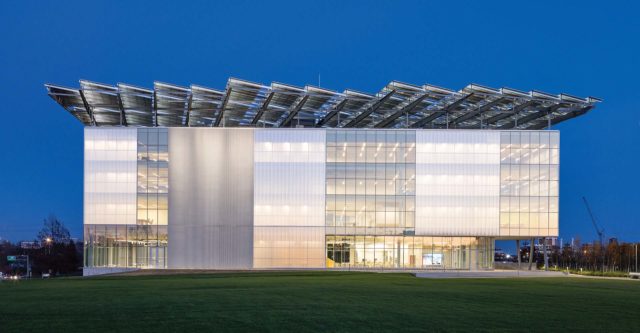
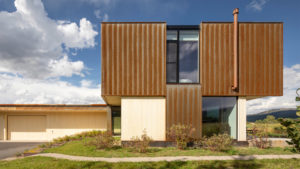
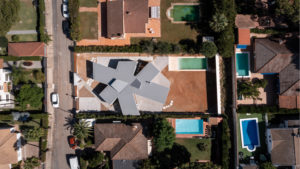

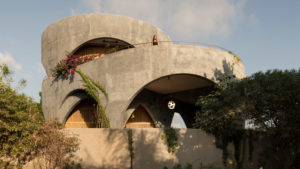
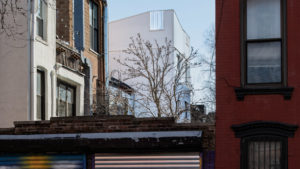
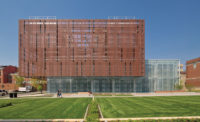
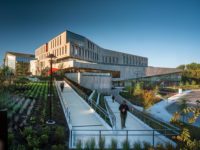
Post a comment to this article
Report Abusive Comment